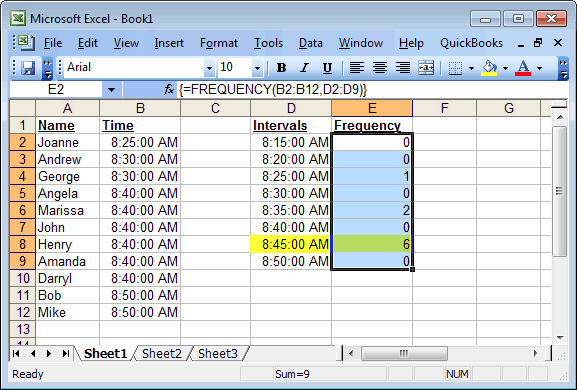
- CALCULATE RANGE IN EXCEL FOR MAC HOW TO
- CALCULATE RANGE IN EXCEL FOR MAC UPDATE
- CALCULATE RANGE IN EXCEL FOR MAC PRO
- CALCULATE RANGE IN EXCEL FOR MAC DOWNLOAD
For example, if you remove 2 data points, the chart will show some empty space on the right. Note that while adding new data automatically updates the chart, deleting data would not completely remove the data points.

CALCULATE RANGE IN EXCEL FOR MAC UPDATE
The above steps would insert a line chart which would automatically update when you add more data to the Excel table.
CALCULATE RANGE IN EXCEL FOR MAC PRO
Pro Tip: To convert a range of cells to an Excel Table, select the cells and use the keyboard shortcut – Control + T (hold the Control key and press the T key). Using Excel Table is the best way to create dynamic ranges as it updates automatically when a new data point is added to it.Įxcel Table feature was introduced in Excel 2007 version of Windows and if you’re versions prior to it, you won’t be able to use it (see the next section on creating dynamic chart range using formulas).
CALCULATE RANGE IN EXCEL FOR MAC DOWNLOAD
Let’s see how each of these methods work.Ĭlick here to download the example file. In most of the cases, using Excel Table is the best way to create dynamic ranges in Excel. There are two ways to create a dynamic chart range in Excel:
CALCULATE RANGE IN EXCEL FOR MAC HOW TO
How to Create a Dynamic Chart Range in Excel? Note that the chart updates with the new data points for May and June as soon as the data in entered. As the data changes, the dynamic range updates instantly which leads to an update in the chart.īelow is an example of a chart that uses a dynamic chart range. This dynamic range is then used as the source data in a chart.


It's good to be aware of the pros and cons of each method and choose the one best suited. Other solutions like pivot tables, DAX and power query are more robust and handle inserting or deleting rows of data easily but are harder to set up. Simple formulas in the worksheet are easy to set up but won't handle inserting or deleting new rows of data easily. Some offer a more robust solution when adding or removing rows from the data, other methods offer an easier implementation. We've explored options including formulas in the worksheet, pivot tables, power pivot DAX formulas, and power query. There are many different options for calculating running totals in Excel. With the optional sorting step above, if we add dates out of order to the source data, power query will sort by date and return the correct order by date for the running total. Right click anywhere on the table and choose Refresh to update the table. What happens with the running total when we add or remove rows from our source data? We will need to refresh the power query output table to update the running total with the changes.


 0 kommentar(er)
0 kommentar(er)
